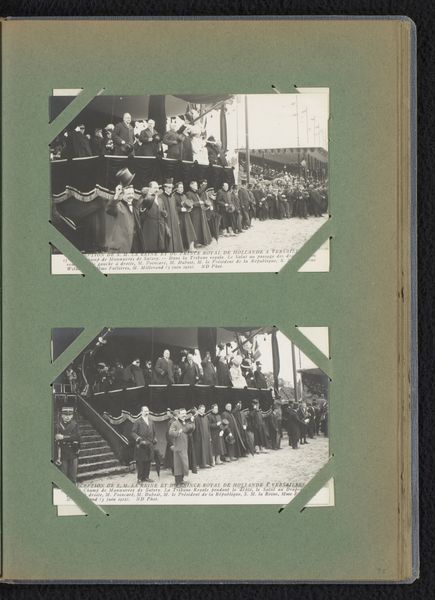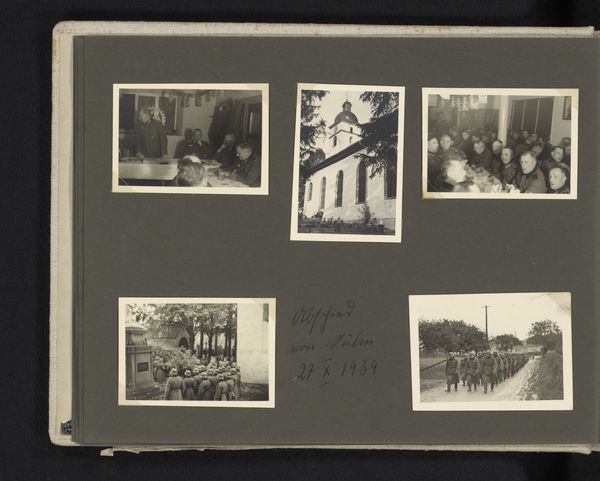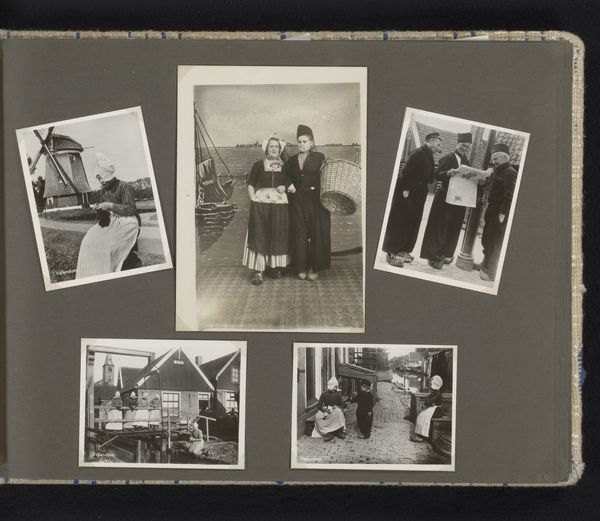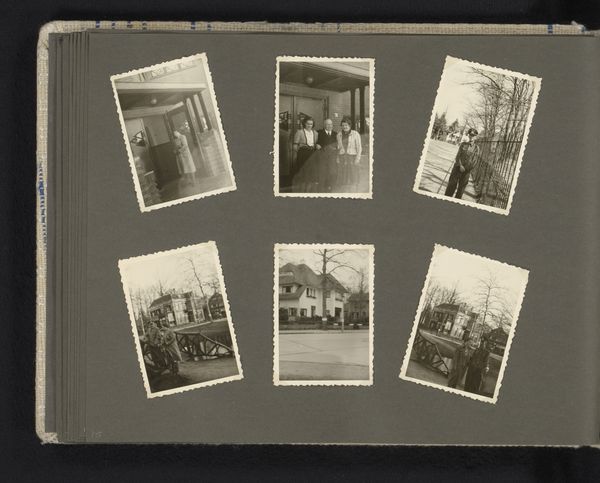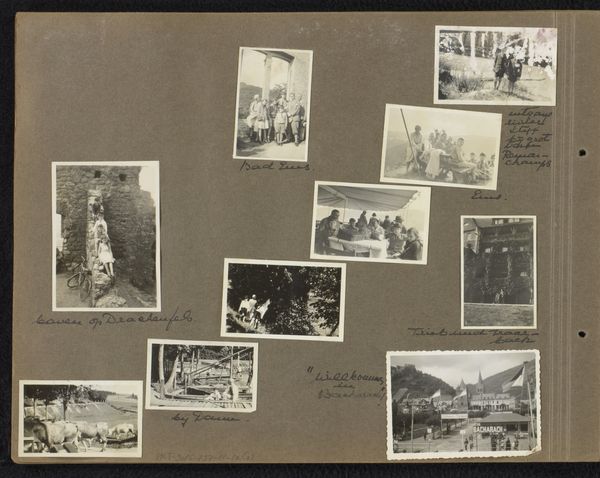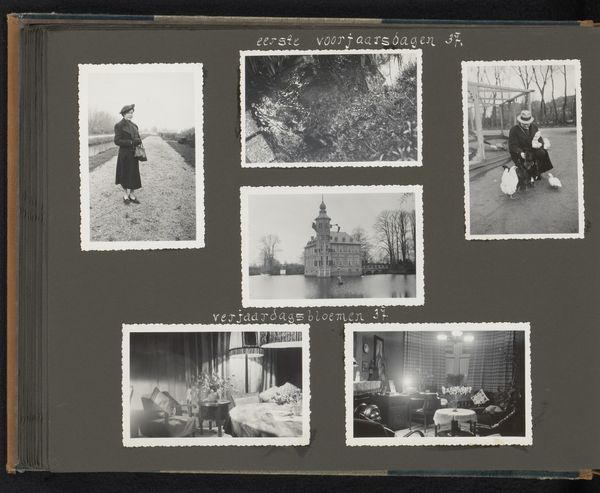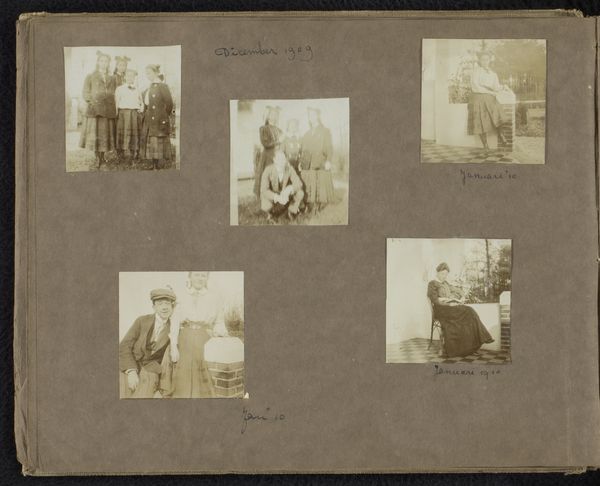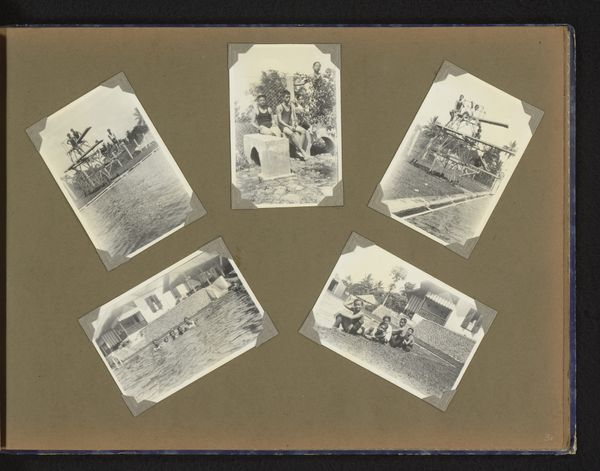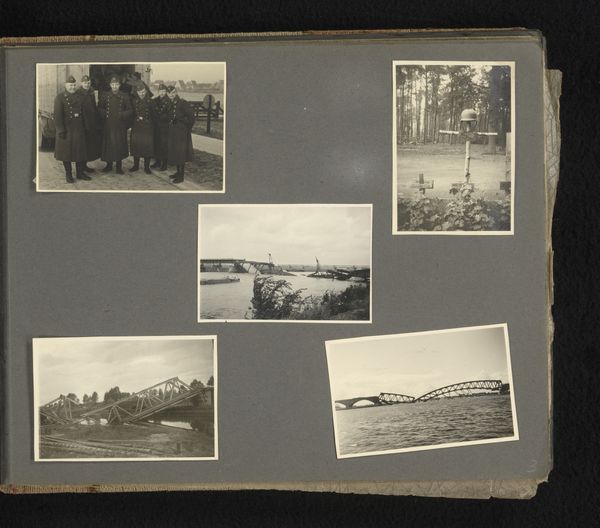
Twee foto's van de familie Van den Berg in Broek in Waterland en Volendam, mei 1924 1924 - 1925
0:00
0:00
photography
#
portrait
#
dutch-golden-age
#
street-photography
#
photography
#
group-portraits
Dimensions: height 243 mm, width 198 mm
Copyright: Rijks Museum: Open Domain
Curator: Hendrik Herman van den Berg’s "Twee foto's van de familie Van den Berg in Broek in Waterland en Volendam, mei 1924" presents us with two adjacent photographs, each capturing a group of family members. I am particularly drawn to the somewhat austere expressions on their faces. What's your initial impression? Editor: Immediately, I notice the rigid formality. It evokes a strong sense of class and social expectation. The children especially look like they’ve been told to stand still and present themselves in a certain way, burdened by societal norms even in their youth. The setting seems integral to this – the Dutch villages acting as backdrops that are themselves steeped in cultural and economic history. Curator: Indeed. Van den Berg, though a member of the family, captured more than a simple snapshot. Think about the social function of portraiture during the early 20th century, particularly within the Dutch context. Group portraits such as these served as displays of familial unity and status, a visual marker of their place within society. The stiff poses you noticed underscore this purpose. They are communicating stability and respectability to their peers, both present and future. Editor: And aren't gender roles visibly at play here? While the boys largely stick to tailored suits, the girls' fashion trends seem designed more for public approval, don’t you agree? You see this echoed in many portraits of the era. They present highly stylized images of ideal womanhood: fashionable yet reserved. We can read those visual cues for deeper sociological insights on normative definitions. Curator: I completely agree. Even their physical placement, in proximity to one another and to the older male figures, reinforces patriarchal structures. Let’s not forget the very act of photographing—controlled by the artist. Consider his role within the family dynamic as influencing this narrative. Beyond documentation, he becomes a constructor of specific messages. The backgrounds themselves function like characterizations too. One scene has canals—a vital aspect in the local economy that influences social relationships—while another looks out into the water which, from a contemporary perspective, speaks of both possibilities but also certain risks and even climate concerns in today’s environment! Editor: It also provokes a deeper discussion of the politics of imagery: Who gets to document whom, and for what purpose? This family’s position allowed them the privilege of capturing and controlling their own image for posterity—something unavailable to many at the time. Considering this photography, it raises critical questions about representation, power and social equity. Curator: A compelling and necessary lens. It reminds us that art, even seemingly straightforward family photos, are steeped in larger systems. Editor: It all comes down to the cultural lens and awareness with which we approach historical narratives that shape today's complex tapestry of societal norms.
Comments
No comments
Be the first to comment and join the conversation on the ultimate creative platform.


